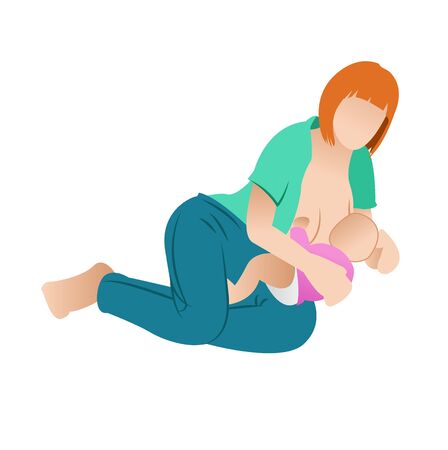Fever: When Is It Too High?
As a parent, it’s natural to worry when your baby feels warm. A fever is often a sign that their body is fighting off an infection, but how do you know when its serious enough to call the doctor? Understanding what qualifies as a fever and when to seek medical help can give you peace of mind.
What Temperature Is Considered a Fever?
A babys normal body temperature typically ranges from about 97°F (36.1°C) to 100.3°F (37.9°C). Anything above this may be considered a fever. Here’s a quick guide:
| Temperature | What It Means |
|---|---|
| Below 97°F (36.1°C) | Possible low body temperature – contact your pediatrician if persistent. |
| 97°F – 100.3°F (36.1°C – 37.9°C) | Normal range for infants. |
| 100.4°F (38°C) or higher | Fever – monitor closely and consider calling the doctor. |
| 102°F (38.9°C) or higher | Seek medical advice, especially if symptoms accompany the fever. |
| 104°F (40°C) or higher | Requires immediate medical attention. |
When Should You Call the Doctor?
The seriousness of a fever depends on your baby’s age and other symptoms. Contact your pediatrician if:
- Your baby is younger than 3 months old and has a rectal temperature of 100.4°F (38°C) or higher.
- Your baby is between 3-6 months old with a fever of 102°F (38.9°C) or higher.
- The fever lasts more than 24 hours in babies under 2 years old.
- Your baby has additional symptoms like difficulty breathing, persistent vomiting, rash, extreme fussiness, or lethargy.
- The fever doesn’t respond to medication or keeps coming back.
How to Monitor Your Baby’s Temperature
Using the right thermometer and technique ensures an accurate reading. Here are some tips:
Best Thermometers for Babies
- Rectal thermometer: Most accurate for infants under 3 months.
- Temporal artery thermometer: Non-invasive and works well for older babies.
- Ear thermometer: Convenient but less reliable for babies under 6 months.
How to Take Your Baby’s Temperature
- Rectal: Apply a small amount of petroleum jelly and gently insert the thermometer tip about half an inch into the rectum.
- Forehead (Temporal): Slide the thermometer across your babys forehead following the manufacturer’s instructions.
- Ear: Gently place the thermometer in the ear canal without forcing it.
If youre ever unsure whether your babys fever is serious, its always best to call your pediatrician for guidance.
2. Breathing Difficulties
Breathing problems in babies can be scary, but knowing what to look for can help you act quickly. If your baby is struggling to breathe, its important to recognize the signs and understand when to seek medical attention.
Signs of Respiratory Distress
If your baby is experiencing any of the following symptoms, they may be having trouble breathing:
| Symptom | Description |
|---|---|
| Wheezing | A high-pitched whistling sound when breathing. |
| Rapid breathing | More than 60 breaths per minute (in newborns) or noticeably faster breathing than usual. |
| Bluish skin | A bluish tint around the lips, face, or nails, indicating low oxygen levels. |
| Nasal flaring | The nostrils widen with each breath, showing that your baby is working harder to breathe. |
| Grunting sounds | A soft grunting noise when exhaling, which may signal difficulty moving air in and out of the lungs. |
| Chest retractions | The skin between the ribs or at the base of the throat pulls in with each breath. |
When to Visit the ER
If your baby has mild congestion or a stuffy nose but is otherwise breathing normally, home care may be enough. However, take your baby to the emergency room if you notice:
- Your baby stops breathing for more than a few seconds.
- The skin turns blue or pale.
- You hear persistent wheezing or grunting sounds.
- Your baby is struggling to breathe, using extra muscles like the neck or ribs.
- Your baby appears extremely fatigued or unresponsive.
Caring for Your Baby at Home
If your baby has mild congestion but no serious breathing difficulties, try these home care tips:
- Use a humidifier: A cool-mist humidifier can help ease congestion and make breathing easier.
- Suction the nose: A bulb syringe or nasal aspirator can remove mucus from tiny nostrils.
- Keeps your baby upright: Holding your baby slightly upright during feedings and sleep can improve airflow.
- Avoid irritants: Keep your home free from smoke, strong fragrances, and dust that could make breathing worse.
If youre ever unsure whether your babys breathing issue is serious, its always best to call your pediatrician or seek emergency care. Acting quickly can make all the difference in keeping your little one safe and healthy.

3. Dehydration and Feeding Issues
Keeping your baby well-hydrated is crucial for their health. Babies can become dehydrated quickly, especially if they are not feeding properly. Knowing the signs of dehydration and what to do if your baby refuses to eat can help prevent serious complications.
Signs of Dehydration
If your baby is not getting enough fluids, they may show signs of dehydration. Here are some key indicators:
| Sign | Description |
|---|---|
| Fewer wet diapers | Your baby should have at least 6 wet diapers a day. If you notice fewer, it could be a sign of dehydration. |
| Dry mouth or lips | A lack of saliva or cracked lips can indicate dehydration. |
| No tears when crying | If your baby cries without producing tears, they may be dehydrated. |
| Lethargy or excessive sleepiness | If your baby is unusually sleepy or difficult to wake, dehydration could be a factor. |
| Sunken soft spot (fontanelle) | The soft spot on your baby’s head appearing sunken may indicate dehydration. |
What to Do If Your Baby Refuses to Feed
If your baby is refusing to eat, it’s important to determine whether it’s temporary or a sign of something more serious. Try these steps:
- Create a calm environment: Reduce noise and distractions to help your baby focus on feeding.
- Check for illness: A stuffy nose, sore throat, or ear infection might make feeding uncomfortable.
- Tweak feeding positions: Experiment with different breastfeeding or bottle-feeding positions to see what works best.
- Avoid force-feeding: Forcing your baby to eat may create negative associations with feeding.
- Keeps track of feedings: Monitor how often and how much your baby eats to identify patterns.
When to Call the Doctor
If your baby shows any of the following signs, seek medical attention right away:
- No wet diapers for more than six hours.
- Persistent refusal to eat for multiple feedings in a row.
- Lethargy or difficulty waking up.
- A sunken fontanelle combined with dry mouth and irritability.
If you’re ever unsure about whether your baby needs medical attention, trust your instincts and call your pediatrician for advice.
4. Unusual Rashes or Skin Changes
Your babys skin is sensitive, and rashes are common. However, some rashes may signal a more serious condition that requires medical attention.
Signs of a Concerning Rash
Most baby rashes are harmless and clear up on their own, but watch for these signs that indicate a need for medical care:
| Rash Characteristic | Why It’s Concerning |
|---|---|
| Does not fade when pressed (non-blanching) | This could be a sign of a serious infection like meningitis. |
| Accompanied by fever | A rash with a high fever may indicate an infection requiring urgent care. |
| Rapidly spreading across the body | If a rash spreads quickly, it may be due to an allergic reaction or infection. |
| Blisters, open sores, or oozing fluid | This could be caused by an infection like impetigo or a severe allergic reaction. |
| Your baby seems very irritable or lethargic | If your baby is unusually fussy, weak, or hard to wake along with the rash, seek medical help. |
When to Call the Doctor
If your baby has any of the above symptoms, its best to contact your pediatrician right away. You should also seek immediate medical attention if your baby develops swelling around the face or lips, has difficulty breathing, or shows any other signs of an allergic reaction.
Caring for Common Rashes at Home
If the rash appears mild and your baby is otherwise acting normal, you can try these home care tips:
- Keep the skin clean and dry: Gently wash with lukewarm water and avoid harsh soaps.
- Avoid irritants: Use fragrance-free lotions and detergents to prevent worsening the rash.
- Dress your baby in loose clothing: Tight clothing can cause friction and make rashes worse.
- Avoid scratching: Keep your babys nails trimmed to prevent skin damage from scratching.
- Monitor for changes: If the rash worsens or new symptoms appear, contact your doctor.
Your babys health is always a priority. While many rashes are harmless, its important to recognize when they might be a sign of something more serious. When in doubt, trust your instincts and consult your pediatrician.
5. Unresponsiveness or Extreme Irritability
As a parent, you quickly learn your baby’s normal behavior—how they respond to your voice, their typical energy levels, and how they react to being comforted. If your baby suddenly becomes unusually lethargic, difficult to wake up, or cries inconsolably for an extended period, it may be a sign of a serious health concern.
Signs to Watch For
It’s important to recognize when your baby’s behavior is out of the ordinary. Below are some signs that require immediate medical attention:
| Behavior | Possible Concern |
|---|---|
| Baby is extremely drowsy and hard to wake up | Could indicate an infection, dehydration, or other serious condition |
| Lack of responsiveness to touch or sound | Might be a sign of neurological issues or severe illness |
| Crying nonstop and unable to be soothed | Pain, fever, or another underlying issue may be causing distress |
| Sudden limpness or floppiness | A possible emergency requiring immediate attention |
What You Can Do
If your baby is showing any of these symptoms:
- Try gently waking them up. If they don’t respond normally, seek medical help right away.
- If crying persists despite feeding, diaper changes, and soothing efforts, contact your pediatrician.
- If your baby appears floppy or weak, take them to the emergency room immediately.
- If youre unsure whether it’s an emergency, trust your instincts and call your doctor or a healthcare provider for advice.
When to Seek Emergency Care
If your baby is unresponsive, has difficulty breathing, turns blue, or seems severely ill in any way, do not wait—call 911 or go to the nearest emergency room immediately.


